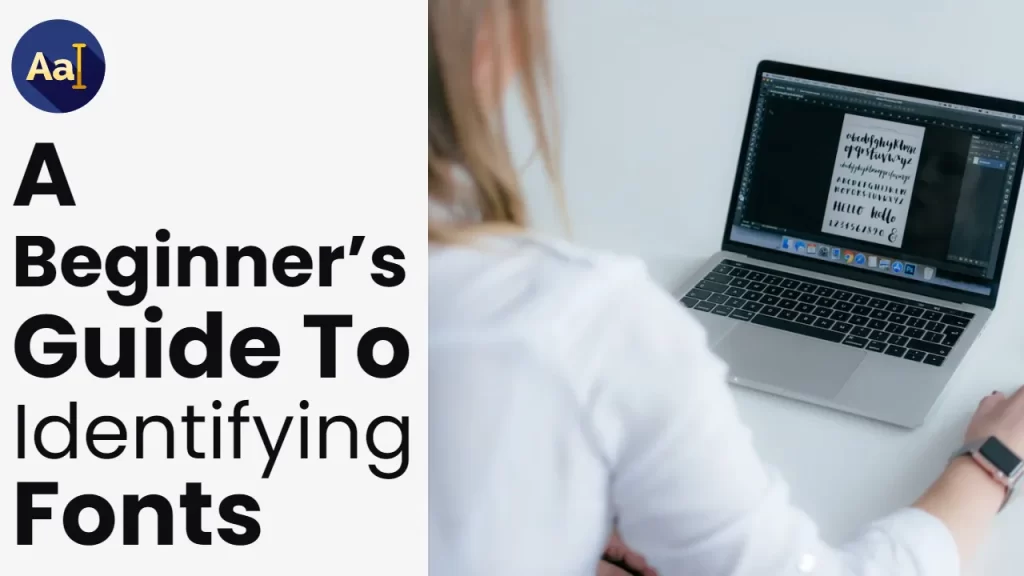A Beginner’s Guide To Identifying Fonts
Are you someone who has always been interested in typography but doesn’t know where to start? Identifying fonts can be an exciting and daunting task at the same time, especially for beginners. With so many different types of fonts and styles available, it can be challenging to know where to begin.
In this article, we will provide you with a beginner’s guide to identifying fonts, covering everything from font types to font pairing. By the end of this article, you’ll be able to identify fonts with ease and start using them in your designs.

Understanding Font Types
The first step to identifying fonts is understanding the different font types. There are four primary font types: Serif, Sans-serif, Script, and Display. Let’s take a closer look at each one.
Serif
Serif fonts are characterized by small lines, or serifs, at the end of each stroke. These fonts are often used in print materials and have a traditional and elegant look. Examples of Serif fonts include Times New Roman, Georgia, and Baskerville.
Sans-serif
Sans-serif fonts do not have serifs, and their strokes have a consistent width. They have a modern and sleek look and are often used in digital designs. Examples of Sans-serif fonts include Arial, Helvetica, and Verdana.
Script
Script fonts are designed to look like handwriting and are often used for formal invitations and announcements. These fonts have varying thickness and are highly decorative. Examples of Script fonts include Lucida Script, Brush Script, and Snell Roundhand.
Display
Display fonts are highly decorative and used for headlines and titles. They come in a wide variety of styles and can range from elegant to whimsical. Examples of Display fonts include Impact, Comic Sans, and Lobster.
Font Characteristics
Once you understand the different font types, it is essential to know the different characteristics of each font. The three primary font characteristics are weight, width, and slant.
Weight
Font weight refers to how thick or thin each stroke is within the letterform. Fonts can be categorized into light, regular, bold, and extra-bold weights.
Width
Font width refers to the width of each letterform. Fonts can be categorized into condensed, regular, and extended widths.
Slant
Font slant refers to the angle at which each letter is tilted. Fonts can be categorized into upright, italic, and oblique slants.
Identifying Fonts
Now that you understand the different font types and characteristics, it’s time to identify fonts. There are two primary methods to identify fonts: using free online tools and recognizing font characteristics.
Free Online Tools
There are many free online tools available that can help you identify fonts with ease. These tools include WhatTheFont, Font Squirrel, and Identifont. Simply upload an image or provide a link to the font you want to identify, and the tool will do the rest.
Recognizing Font Characteristics
If you don’t want to use online tools, you can identify fonts by recognizing their characteristics. Look for the font type, weight, width, and slant, and compare them to known fonts to narrow down your options. You can also use font pairing to help you identify fonts by pairing them with a known font.
Font Pairing
Font pairing is the process of selecting two or more fonts that complement each other and work well together in a design. When selecting fonts, it’s important to consider contrast, similarity, and hierarchy.
Contrast
Contrast refers to the differences between two or more fonts. A good font pairing has enough contrast to create visual interest but not so much that it becomes overwhelming.
Similarity
Similarity refers to the similarities between two or more fonts. A good font pairing has enough similarity to create a cohesive design but not so much that the fonts become indistinguishable.
Hierarchy
Hierarchy refers to the order of importance between different text elements in a design. When selecting fonts, it’s important to consider the hierarchy and use different fonts to distinguish between different levels of importance.
Tips for Effective Font Selection
Here are some tips for effective font selection:
- Use two or three fonts at most to avoid overwhelming your design.
- Consider the mood and tone you want to convey and select fonts that match.
- Use font pairing to create visual interest and hierarchy in your design.
- Avoid using too many decorative fonts as they can be difficult to read in large bodies of text.
- Test your font choices on different devices and in different sizes to ensure they are legible.
Conclusion
Identifying fonts can be a daunting task, but with the right knowledge and practice, anyone can do it. By understanding the different font types and characteristics, using online tools or recognizing font characteristics, and utilizing font pairing, you can create visually appealing and effective designs.
Remember to keep your font choices simple and legible, and always consider the mood and tone you want to convey. With these tips, you’ll be able to identify fonts and create stunning designs in no time.
